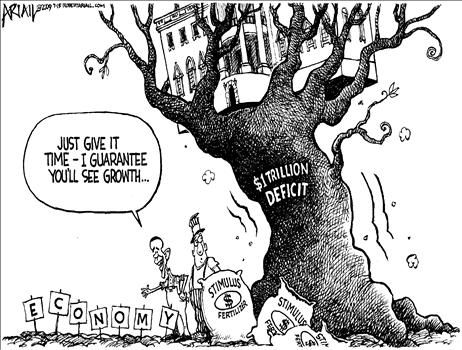The effectiveness of President Obama's $787 billion economic stimulus depends on the "multiplier effect," which holds that an increase in government spending will yield a multiple increase in aggregate spending by the individuals and businesses that receive the money.
For its stimulus package, the Obama administration is assuming a multiplier of 1.5; that is, for every $1 of additional government spending, gross domestic product (GDP) will increase $1.50.
However, an analysis of data on federal outlays and GDP for fiscal years 1947-2007 shows that the multiplier coefficient is 0.46, meaning that a dollar's worth of additional federal government spending yields about 50 cents worth of additional GDP.
The Congressional Budget Office (CBO) asserts that government borrowing to service the debt the government has run up will tend to reduce the stock of productive capital.
In their judgment, the stimulus bill actually will lead to a lower rate of growth in 2012 and subsequent years. After a decade, according to the CBO, national output will be lower than if NO stimulus bill had been passed...
[The goal was never really stimulating the economy, economists know this approach doesn't work - it's about using this 'crisis' to expand the power of government, period.]
READ MORE
Wednesday, July 22, 2009
FISCAL POLICY AND ECONOMIC RECOVERY
Subscribe to:
Post Comments (Atom)














No comments:
Post a Comment